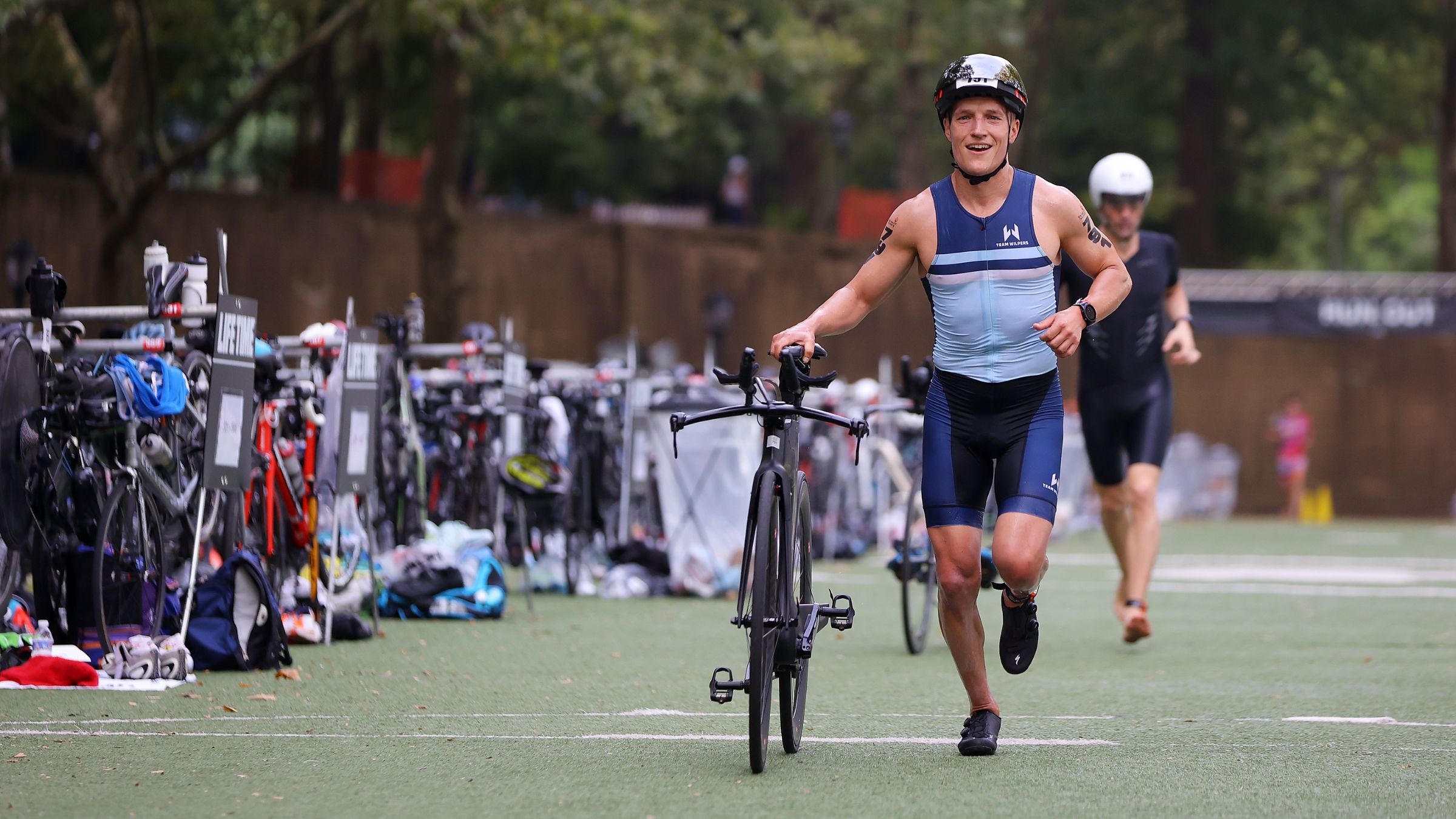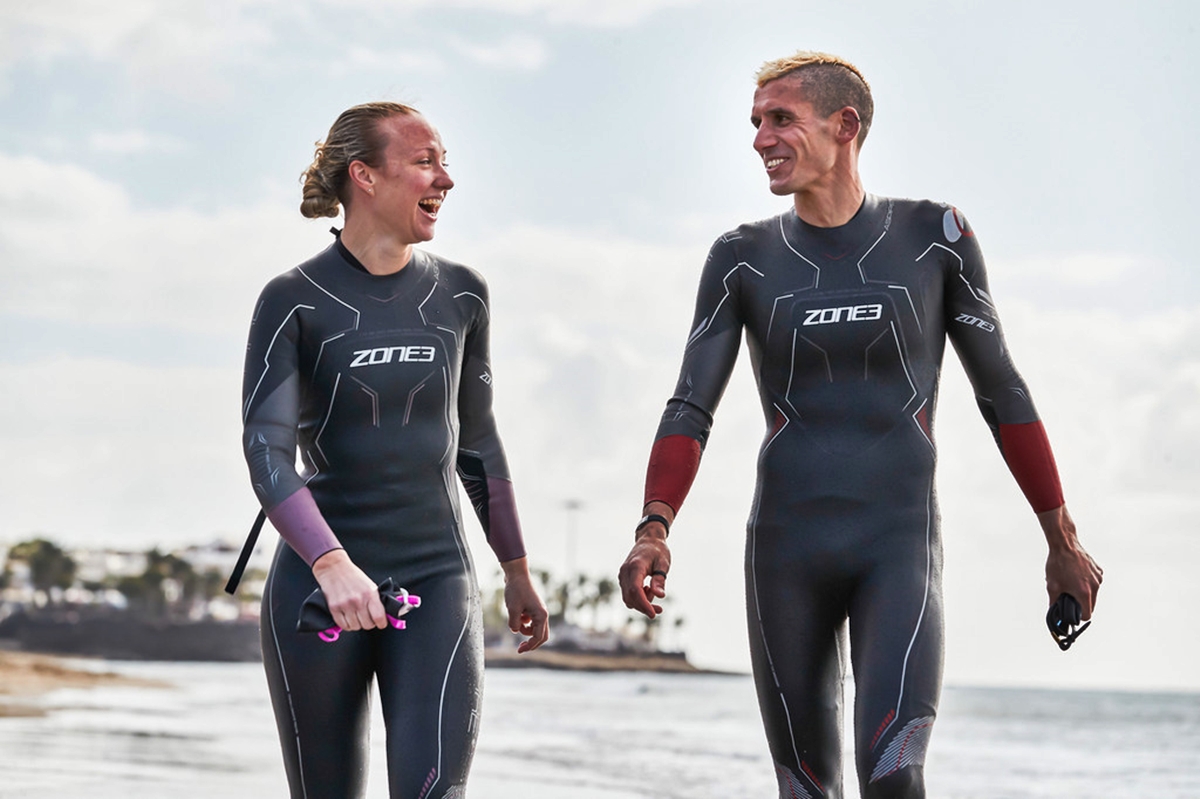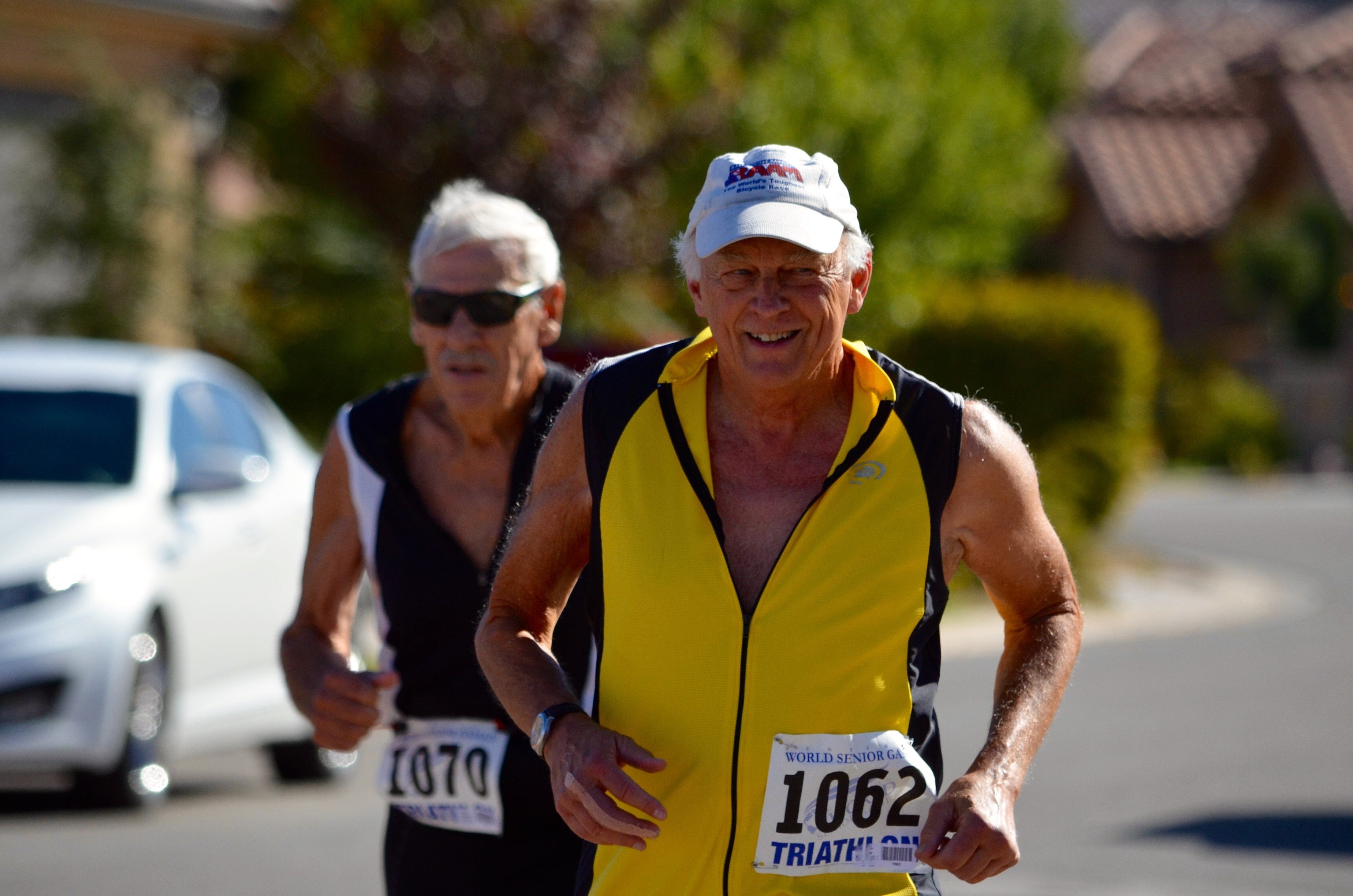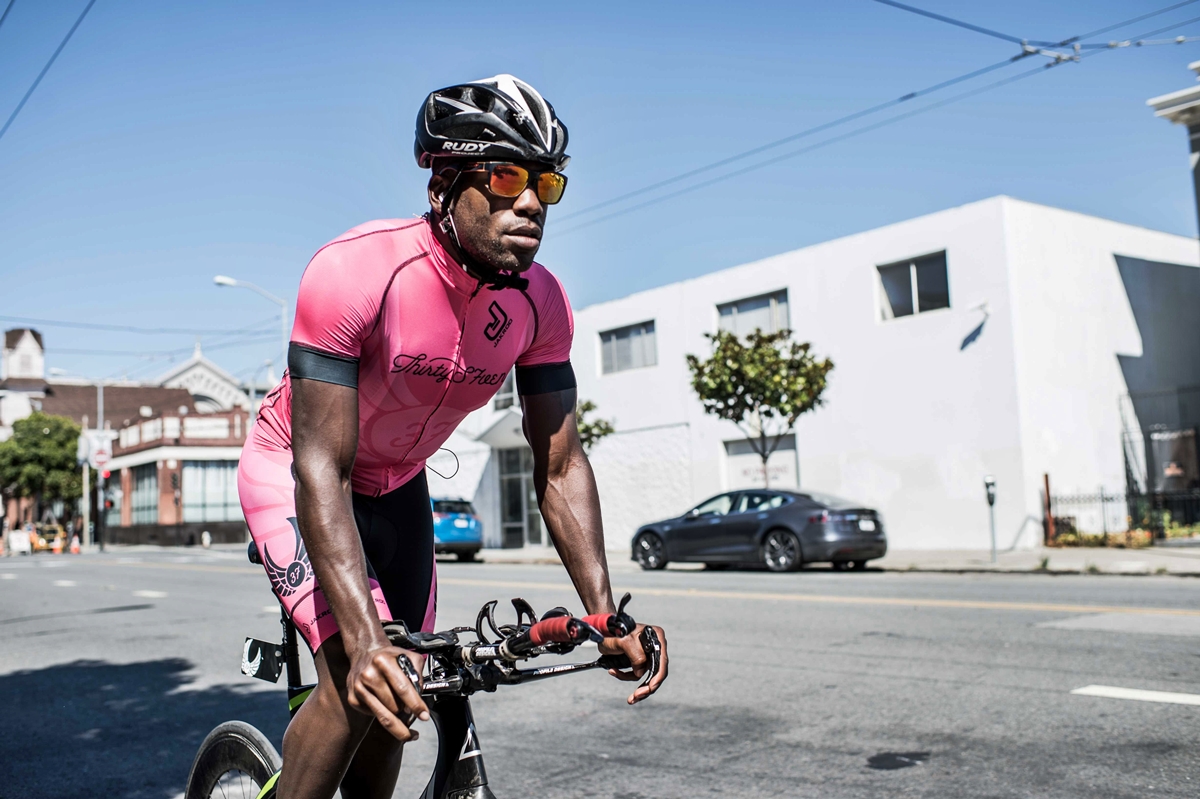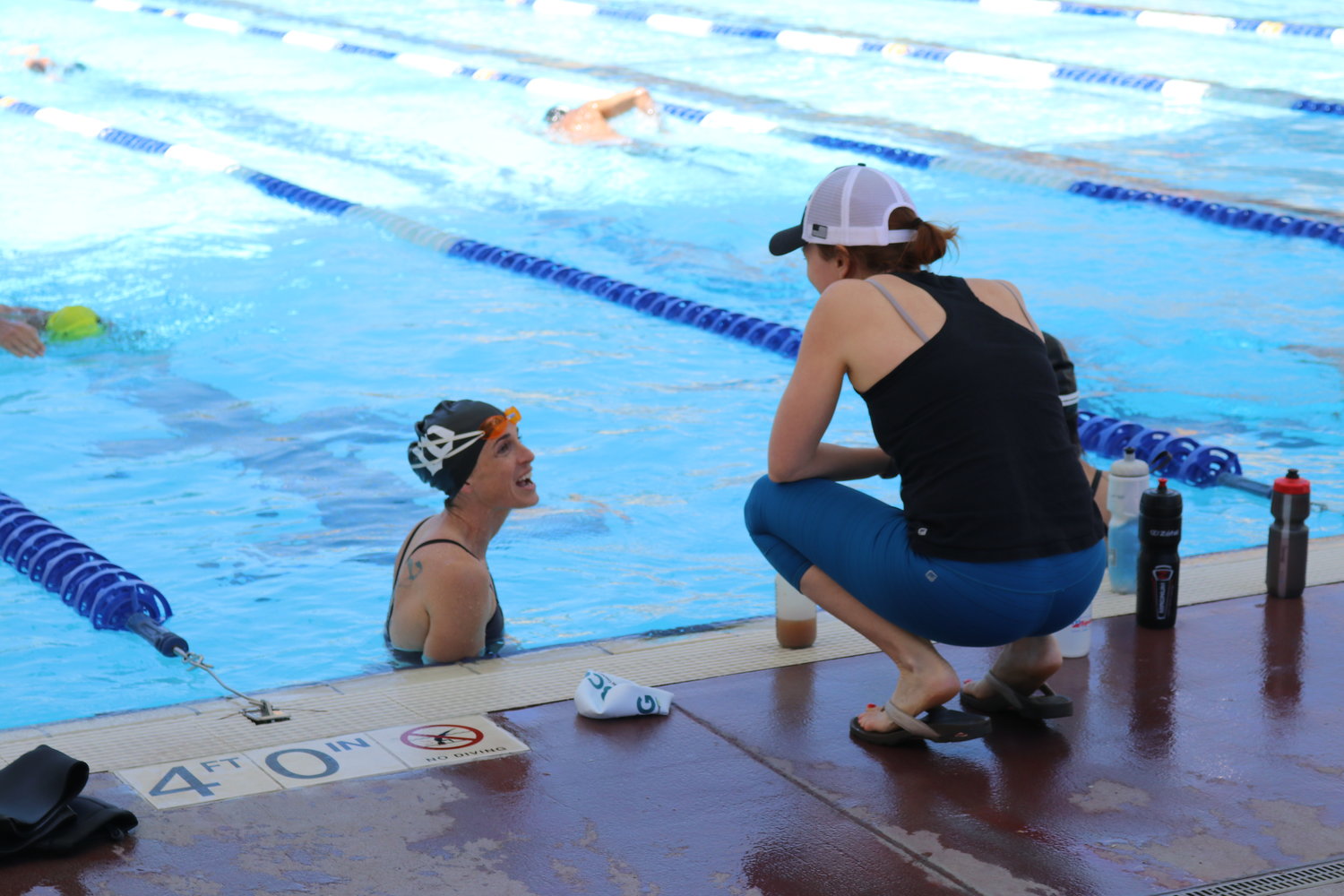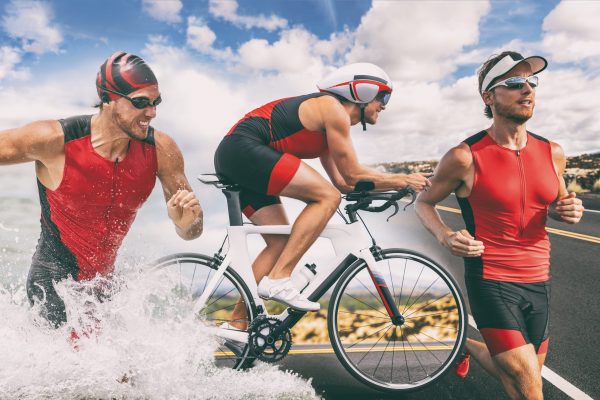

Featured
What Zone Should I Train In Triathlon
Modified: January 22, 2024
Get expert advice on what training zone to focus on for your triathlon journey. Discover the featured zone that will take your performance to the next level.
Introduction
Welcome to the world of triathlon training! As an aspiring or seasoned triathlete, you may find yourself wondering what training zone you should be in to maximize your performance. Triathlon is a demanding sport that requires a combination of cardiovascular endurance, strength, and mental toughness. To excel in all three disciplines – swimming, cycling, and running – it is crucial to train in specific intensity zones.
Training zones are different levels of exertion ranging from easy recovery to maximum effort. Each zone targets different physiological adaptations and helps improve your overall fitness. By understanding and incorporating the right training zones into your triathlon training plan, you can optimize your workouts and unlock your full potential.
In this article, we will explore the different triathlon training zones, their benefits, and how to choose the right zone for your workouts. Whether you’re a beginner, intermediate, or advanced triathlete, understanding these zones will enable you to train smarter, avoid overtraining, and achieve your goals more effectively.
Understanding Triathlon Training Zones
Triathlon training zones are specific ranges of intensity that help athletes effectively target and improve different aspects of their fitness. These zones are often referred to as heart rate zones or power zones, depending on the metric used to measure intensity.
There are several different models for defining training zones, but one commonly used method is based on the percentage of your maximum heart rate (MHR). This method divides your effort into different zones based on a percentage range of your maximum heart rate.
Here is a breakdown of the different triathlon training zones:
- Zone 1: Recovery Zone
- Zone 2: Endurance Zone
- Zone 3: Tempo Zone
- Zone 4: Lactate Threshold Zone
- Zone 5: VO2 Max Zone
This is the easiest and most relaxed training zone. It is primarily used for active recovery and allows your body to recover from more intense workouts. In this zone, you should be able to hold a conversation easily, and your heart rate should be around 50-60% of your MHR.
The endurance zone is where you build your aerobic base and improve your stamina. This zone should feel comfortable, and you should be able to maintain a conversation without too much strain. Your heart rate in this zone should be around 60-70% of your MHR.
The tempo zone is where you start to push your effort level up a notch. In this zone, you are working at a sustainable pace that is slightly more challenging than your endurance zone. Your heart rate should be around 70-80% of your MHR, and you should only be able to speak in short sentences.
This zone is where you start to push your lactate threshold, which is the point at which lactic acid begins to accumulate in your muscles. Training in this zone improves your ability to sustain a high-intensity effort over a longer period. Your heart rate in this zone should be around 80-90% of your MHR, and speaking should be difficult.
The VO2 max zone is the challenge zone where you push your body to its maximum aerobic capacity. Training in this zone improves your ability to utilize oxygen efficiently and increases your aerobic capacity. Your heart rate in this zone should be around 90-100% of your MHR, and speaking should be almost impossible.
Zone 1: Recovery Zone
The recovery zone, also known as zone 1, is the lowest intensity training zone. It plays a vital role in the triathlon training process by allowing your body to recover and rebuild after intense workouts or races. Training in this zone helps improve blood circulation, reduces muscle soreness, and promotes overall recovery.
When you are in the recovery zone, your heart rate should be around 50-60% of your maximum heart rate (MHR). This level of exertion is meant to be light and comfortable, allowing you to complete low-intensity exercises without placing excessive stress on your body.
Activities in the recovery zone can include easy-paced jogs, gentle swimming, or relaxed cycling. The focus here is on keeping your heart rate within the designated range and allowing your body to recover from more intense workouts.
By incorporating the recovery zone into your training plan, you give your body the opportunity to repair and strengthen itself. This zone helps flush out waste products, replenish energy stores, and enhance the overall efficiency of your cardiovascular system.
While training in the recovery zone, it is essential to listen to your body and avoid pushing yourself too hard. The goal is to maintain a low-intensity effort that allows for active recovery without causing further fatigue or stress.
It’s important to note that although the recovery zone is crucial, it should not make up the majority of your training. While it can be tempting to spend all your time in this comfortable zone, incorporating higher intensity workouts in other training zones is essential for building endurance, strength, and speed.
Overall, the recovery zone is an integral part of effective triathlon training. It helps promote recovery, reduces the risk of overtraining, and prepares your body for more intense workouts. Integrating regular recovery zone sessions into your training plan enables you to balance your efforts and optimize your performance in the long run.
Zone 2: Endurance Zone
The endurance zone, also known as zone 2, is a crucial training zone for triathletes. This zone focuses on building your aerobic base and improving your stamina. Training in this zone allows you to sustain a steady effort for extended periods, which is essential for success in long-distance events.
In the endurance zone, your heart rate should be around 60-70% of your maximum heart rate (MHR). Compared to the recovery zone, the intensity in this zone is slightly higher, but it should still feel comfortable and manageable. You should be able to maintain a conversation without too much strain.
Endurance workouts in this zone can include longer distance runs, moderate-paced bike rides, or sustained swims. The key is to maintain a consistent effort level that challenges your cardiovascular system while still allowing for efficient oxygen delivery to your muscles.
Training in the endurance zone provides several benefits. Firstly, it enhances your cardiovascular fitness by strengthening your heart and lungs. It improves your body’s ability to utilize oxygen, thereby improving endurance and fuel efficiency.
In addition to cardiovascular benefits, the endurance zone also helps develop muscular endurance. By training at a sustained effort, you are training your muscles to handle prolonged, steady-state activity. This is particularly important for the bike and run portions of a triathlon.
Furthermore, spending time in the endurance zone helps improve mental resilience. Since long-distance triathlon events require mental fortitude and focus, training in this zone enables you to develop the mental stamina necessary to push through challenging moments and maintain a steady pace.
It’s important to remember that the endurance zone should make up a significant portion of your training volume. It forms the foundation of your fitness and sets the groundwork for more intense workouts in higher zones.
Incorporating endurance zone training into your triathlon plan can be accomplished through long, steady workouts that gradually increase in duration and intensity. It’s important to strike a balance between volume and intensity to avoid burnout and overtraining.
By regularly training in the endurance zone, you will see improvements in your aerobic capacity, endurance, and overall race performance. It lays the foundation for success in triathlon by building a solid base for your training.
Zone 3: Tempo Zone
The tempo zone, also known as zone 3, is a training zone that focuses on pushing your effort level slightly higher than the endurance zone. Training in this zone helps improve your lactate threshold and increase your sustainable race pace.
In the tempo zone, your heart rate should be around 70-80% of your maximum heart rate (MHR). This zone is considered moderately challenging, and your breathing and effort level should increase compared to the previous zones. You should be able to speak in shorter sentences but still maintain a consistent effort.
Workouts in the tempo zone involve sustaining a steady effort for a prolonged period, such as tempo runs, steady-state cycling, or threshold swimming sets. The goal is to challenge yourself aerobically and increase your ability to sustain a faster pace.
Training in the tempo zone provides several benefits for triathletes. Firstly, it helps enhance your lactate threshold, which is the point at which lactic acid starts to accumulate in your muscles. By training at this intensity, you improve your body’s ability to clear lactic acid and delay fatigue.
Furthermore, tempo training helps increase your aerobic capacity and improves your endurance at higher intensities. It trains your cardiovascular system to deliver oxygen more efficiently to your muscles, allowing you to maintain a faster pace for a longer duration.
Incorporating tempo zone workouts into your training plan is essential for improving your race pace. It not only enhances your physical capabilities but also helps develop mental resilience and the ability to sustain discomfort during races.
It’s important to note that while the tempo zone is challenging, it should still be manageable and sustainable. Pushing too hard in this zone can lead to overtraining or injury, so it’s crucial to listen to your body and gradually increase your intensity over time.
Tempo zone workouts can be integrated into your training plan by incorporating interval sessions or longer sustained efforts at your targeted race pace. By including regular tempo workouts, you will see improvements in your ability to maintain higher intensities and sustain a faster pace during your triathlon events.
Zone 4: Lactate Threshold Zone
The lactate threshold zone, also known as zone 4, is a crucial training zone for triathletes looking to improve their performance in endurance events. Training in this zone focuses on pushing your effort level to the point just below where lactic acid begins to accumulate in your muscles.
In the lactate threshold zone, your heart rate should be around 80-90% of your maximum heart rate (MHR). This zone is challenging and requires a sustained effort, with breathing becoming more labored and your ability to speak becoming limited.
Workouts in the lactate threshold zone typically involve intervals or sustained efforts at a high, but sustainable, pace. This trains your body to clear lactic acid more efficiently and delay the onset of fatigue, allowing you to maintain a faster pace for longer.
Training in the lactate threshold zone provides several benefits for triathletes. Firstly, it directly improves your lactate threshold, which is the point at which lactic acid starts to accumulate in your muscles at a faster rate than your body can clear it. By training at this intensity, you increase your body’s ability to clear lactic acid and continue to perform at a high level.
In addition to improving your lactate threshold, training in this zone also helps increase your aerobic capacity and overall endurance. The sustained effort required in this zone trains your cardiovascular system to deliver oxygen more effectively to your working muscles, allowing you to maintain a higher intensity for a longer duration.
It’s important to approach lactate threshold training with caution, as it is a highly demanding zone. It requires focus, mental resilience, and careful monitoring of your exertion level to prevent overtraining or injury.
To incorporate lactate threshold zone workouts into your training plan, consider including interval sessions or longer sustained efforts at or slightly below your lactate threshold. Gradually increase the duration and intensity of these workouts over time to continue challenging your body and improving your performance.
By regularly training in the lactate threshold zone, you will see improvements in your ability to sustain a higher pace, increase your endurance, and perform at a higher level during your triathlon events.
Zone 5: VO2 Max Zone
The VO2 max zone, also known as zone 5, is the high-intensity training zone where you push your body to its maximum aerobic capacity. Training in this zone is essential for improving your oxygen utilization, increasing your aerobic capacity, and enhancing your overall performance in triathlon events.
When you’re in the VO2 max zone, your heart rate should be around 90-100% of your maximum heart rate (MHR). This zone is very challenging, and your breathing will be heavy and labored. Speaking will be almost impossible as you are putting forth maximum effort.
Workouts in the VO2 max zone typically involve short, intense intervals or sustained efforts at or near your maximum effort level. These workouts are designed to stress your cardiovascular system and train your body to utilize oxygen more efficiently.
Training in the VO2 max zone provides several benefits for triathletes. Firstly, it helps increase your VO2 max, which is the maximum amount of oxygen your body can use during intense exercise. By training at this intensity, you can improve your body’s ability to deliver oxygen to your working muscles.
In addition, training in this zone improves your aerobic capacity, allowing you to sustain a high effort level for a longer duration. It enhances your ability to perform intense bursts of activity during triathlon events and helps you maintain a faster pace.
It’s important to approach VO2 max training with caution, as it is a highly demanding zone that requires proper warm-up, cool-down, and recovery. It is recommended to gradually increase the duration and intensity of VO2 max workouts to prevent overtraining and reduce the risk of injury.
Integrating VO2 max zone workouts into your training plan can be accomplished through interval sessions or short, intense bursts of activity followed by recovery periods. These workouts challenge your body’s ability to consume and utilize oxygen efficiently.
By regularly including VO2 max zone training in your triathlon plan, you will see improvements in your aerobic capacity, speed, and overall race performance. It pushes the boundaries of your cardiovascular fitness and allows you to reach your full potential as a triathlete.
Zone 6: Anaerobic Capacity Zone
The anaerobic capacity zone, also known as zone 6, is a training zone that focuses on short, intense bursts of activity without relying on oxygen for energy. Training in this zone improves your body’s ability to handle high-intensity efforts and enhances your anaerobic capacity, which is essential for sprinting and short-distance races in triathlon.
In the anaerobic capacity zone, your heart rate will typically be above 100% of your maximum heart rate (MHR). This zone is highly demanding, and your breathing will be rapid and intense. It is characterized by short, explosive efforts where speaking is challenging.
Workouts in the anaerobic capacity zone involve various high-intensity intervals or activities that push you to your maximum effort level. These workouts are designed to stress your anaerobic energy systems, allowing you to improve your ability to sustain high-intensity efforts.
Training in the anaerobic capacity zone provides several benefits for triathletes. Firstly, it enhances your anaerobic threshold, which is the point at which your body switches from relying on aerobic energy systems to anaerobic energy systems. By training in this zone, you improve your body’s ability to tolerate and clear lactic acid more efficiently.
Additionally, training in this zone helps develop your neuromuscular power, which is essential for quick accelerations, surges, and short bursts of speed in races. It helps improve your explosiveness and ability to generate power during challenging moments in triathlon events.
It’s important to approach anaerobic capacity training with caution, as it can be highly taxing on your body. It is recommended to gradually increase the intensity and duration of these workouts to prevent overtraining and minimize the risk of injury.
Integrating anaerobic capacity zone workouts into your training plan can be accomplished through interval sessions, hill sprints, or other high-intensity activities with short bursts of maximum effort. These workouts challenge your body to perform at its highest capacity without relying on oxygen.
By regularly including anaerobic capacity zone training in your triathlon plan, you will see improvements in your ability to handle high-intensity efforts, generate power, and successfully execute short bursts of speed. It enhances your overall race performance and prepares you for the demands of sprint and short-distance races in triathlon.
Zone 7: Neuromuscular Power Zone
The neuromuscular power zone, also known as zone 7, is a training zone that focuses on developing explosive power and speed. Training in this zone helps improve your ability to generate quick bursts of force and enhances your neuromuscular coordination, which is essential for sprinting, climbing, and quick transitions in triathlon.
In the neuromuscular power zone, your heart rate will typically be above 100% of your maximum heart rate (MHR). This zone is highly intense, and your breathing and effort level will be at their highest. It is characterized by short, explosive efforts where speaking is nearly impossible.
Workouts in the neuromuscular power zone often involve activities such as sprints, hill repeats, or focused strength and power exercises that target specific muscle groups relevant to triathlon movements.
Training in the neuromuscular power zone provides several benefits for triathletes. Firstly, it helps improve your muscle fiber recruitment, enabling you to generate more power and force during quick bursts of activity. This translates to faster sprints, stronger climbing abilities, and explosive transitions between disciplines.
Additionally, training in this zone enhances your overall coordination and proprioception, which are essential for maintaining balance and stability during complex movements in triathlon. It improves your body’s ability to quickly and efficiently react to changes in terrain or race scenarios.
It’s important to approach neuromuscular power training with caution, as it can be demanding on your body. It is recommended to include proper warm-up and cool-down routines, as well as gradually progress the intensity and duration of these workouts to prevent overtraining and reduce the risk of injury.
Integrating neuromuscular power zone workouts into your training plan can be accomplished through specific drills, plyometric exercises, or explosive intervals targeting key muscle groups used in triathlon movements. These workouts challenge your neuromuscular system and help you develop the power and speed necessary for race performance.
By regularly including neuromuscular power zone training in your triathlon plan, you will see improvements in your explosive power, speed, and race execution. It enhances your overall performance and prepares you for the demands of sprinting, climbing, and quick movements in triathlon events.
Choosing the Right Training Zone for Triathlon
Choosing the right training zone for triathlon involves understanding your goals, current fitness level, and the specific demands of your race distance. Each training zone serves a unique purpose and targets different aspects of your fitness, so it’s important to choose the zones that align with your objectives.
Firstly, consider your race distance. Shorter distances, such as sprint or Olympic, require a greater emphasis on higher intensity zones like the VO2 max and anaerobic capacity zones. These zones help develop speed, power, and the ability to sustain intense efforts over shorter durations.
For long-distance races, like half Ironman or Ironman, the focus shifts to endurance and aerobic capacity. The recovery, endurance, and tempo zones become more critical in these cases, as they help build your aerobic base, improve stamina, and enhance overall endurance.
In addition to race distance, consider your current fitness level and training experience. Beginners should start by focusing on building a solid foundation in the recovery and endurance zones. As you progress, you can gradually incorporate more intense workouts in the tempo, lactate threshold, and VO2 max zones.
It’s also important to consider your strengths and weaknesses as a triathlete. If you excel in one discipline but struggle in another, tailor your training zones to address those weaknesses. For example, if swimming is your weakest discipline, include more endurance-focused workouts in the pool to build your swimming stamina.
Lastly, don’t forget to listen to your body. Pay attention to how each training zone feels and adjust your effort level accordingly. If you feel fatigued or are experiencing excessive soreness, it may be time to scale back and focus on the recovery zone. On the other hand, if you are consistently performing well in lower intensity zones and feel ready for a challenge, gradually introduce higher intensity workouts.
By carefully selecting the right training zones for your triathlon training, you can optimize your performance, reduce the risk of overtraining, and improve your overall fitness. Remember to create a well-balanced training plan that incorporates a variety of training zones to target different aspects of your triathlon performance.
Conclusion
Training in the appropriate zones is key to maximizing your performance in triathlon. Each training zone serves a specific purpose and targets different aspects of your fitness, allowing you to develop your endurance, speed, power, and overall race performance.
Understanding and incorporating the various training zones – from the recovery zone to the neuromuscular power zone – into your training plan is essential for balanced and effective training. By training in the right zones, you can optimize your workouts, avoid overtraining, and improve your overall fitness and race results.
When choosing your training zones, consider factors such as your race distance, current fitness level, and weaknesses as a triathlete. Tailor your training zones to address your specific goals and areas of improvement while listening to your body and adjusting your effort level accordingly.
Remember that triathlon training is a journey, and it’s important to have a well-structured plan that includes a combination of different training zones. Striking a balance between endurance, speed, power, and recovery will help you progress and perform at your best.
So, lace up your shoes, hop on your bike, and dive into the pool with purpose. Embrace the challenge and rewards that triathlon training brings. By training in the right zones and consistently putting in the work, you’ll be well on your way to achieving your triathlon goals and surpassing your own expectations.


